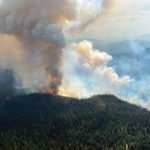Home »

Public invited to comment on Kootenay Lake TSA
The public is invited to get involved in the timber supply review for the Kootenay Lake Timber Supply Area (TSA) by submitting comments before July 4.
The public can comment on the timber supply analysis included in the just-released Kootenay Lake Timber Supply Area discussion document. The document describes the geography, natural resources and current forest-management practices in the Kootenay Lake TSA, to be considered by the chief forester in his allowable annual cut determination.
Before setting the new allowable annual cut, the chief forester will consider input and feedback from First Nations and the public. The review, the fourth for the Kootenay Lake TSA since the 1990s, examines the impacts of current legal requirements and demonstrated forest management practices on the timber supply, economy, environment and social conditions of the local area and province.
The review will also be used to continue government support for putting First Nations knowledge at the forefront of modernized forest policy and furthering the province’s stated goal of getting more value for its forests.
The Kootenay Lake TSA covers about 1.2-million hectares in southeastern British Columbia in the Selkirk and Purcell Mountain ranges, bound by Glacier National Park to the north and the Canada/United States international border to the south.
 The current allowable annual cut for the Kootenay Lake TSA, set on Aug. 12, 2010, is 640,000 cubic metres per year. The TSA includes the territories of a number of First Nations, all of which have been invited to provide input on the timber supply review for consideration in setting the allowable annual cut for the area.
The current allowable annual cut for the Kootenay Lake TSA, set on Aug. 12, 2010, is 640,000 cubic metres per year. The TSA includes the territories of a number of First Nations, all of which have been invited to provide input on the timber supply review for consideration in setting the allowable annual cut for the area.
Administered by the Selkirk Natural Resource District, the TSA is one of seven within the Kootenay-Boundary Natural Resource Region. The communities of Creston, Kaslo and Nelson, as well as three community forests and several parks are within the TSA.
Under the Forest Act, to ensure that B.C.’s forests are managed sustainably, the chief forester must determine the allowable annual cut in each of the province’s 37 TSAs and 33 tree-farm licences at least once every 10 years.
The chief forester’s allowable annual cut determination is an independent, professional judgment, based on information ranging from technical forestry reports, First Nations and public input, and government’s social and economic goals.
To download a copy of the discussion paper, visit the Ministry of Forests’ Forest Analysis and Inventory Branch webpage.
Comments can be submitted to Ian Wiles, stewardship officer, Selkirk Natural Resources District, by email: [email protected] or by phone: 250-825-1100.
Lead image: Forest outside Riondel. e-KNOW file photo
e-KNOW







